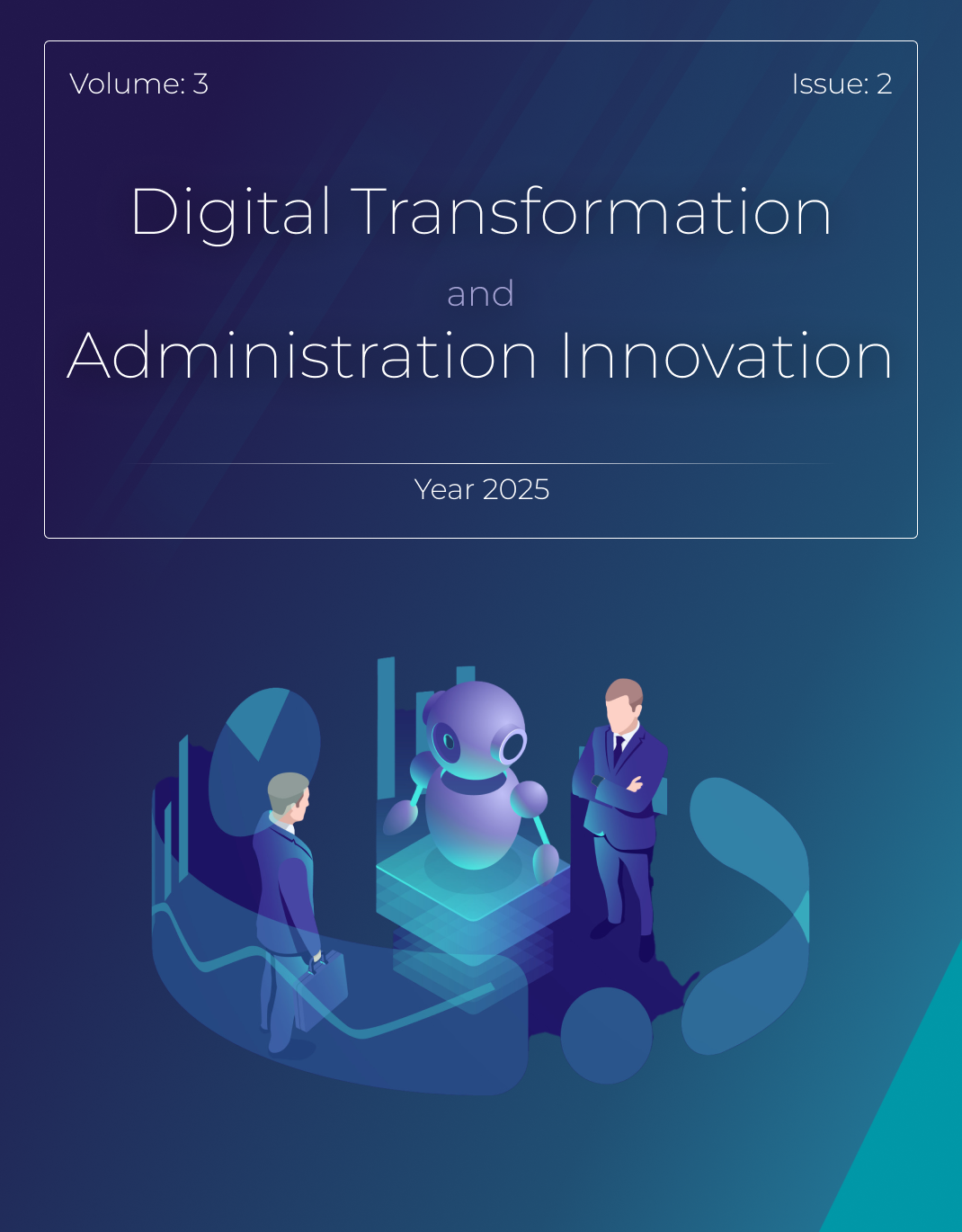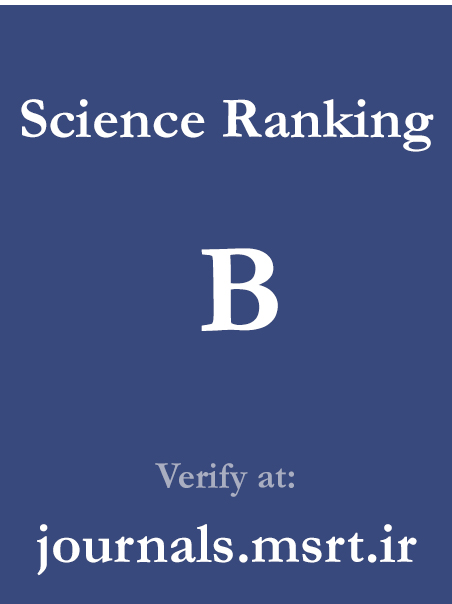Customer Loyalty Modeling Based on Social Marketing in the Banking Industry
Keywords:
Social Marketing, Loyalty, Banking IndustryAbstract
One of the most important concerns for banks in achieving maximum efficiency is customer loyalty. On the other hand, social marketing, as the newest marketing philosophy emphasizing individual and societal benefits alongside the interests of banks, represents a valuable approach for motivating customers and altering their attitudes toward the bank. The aim of this study is to develop a model for enhancing customer loyalty in the banking industry using social marketing. This study is qualitative in method and developmental in purpose. It is based on in-depth interviews with experts in the banking industry and branch managers of banks in Tehran. A purposive sampling method was employed. Data collection was carried out through library research and in-depth interviews with 14 experts. For data analysis, after reviewing the existing literature and prior research, the MAXQDA software and coding methodology were used to analyze the interview data. The findings of the study indicate that the dimensions of social marketing are related to customer loyalty. Through selective coding results, it was shown that trust, commitment, price, tools and customer expectations, causal conditions, employee behavior, staff training, facilities and technology, contextual conditions, bank characteristics, society and customer, intervening conditions, loyalty, satisfaction, and the sense of value represent core conditions, while cultural development, facilitative regulations, government support, and advertising constitute the strategic conditions that form the proposed model.
Downloads
References
Akbari, M., Azar, A., Hajimahmoudlou, M., Ayoob, E., & Al-Taha, S. H. (2019). The effect of corporate social responsibility on organizational citizenship behavior: The mediating role of job involvement, job satisfaction, and employee voice. Human Resource Studies, 9(4), 1-24. https://sid.ir/paper/360473/fa
Alizadeh, H., Khorramabadi, M., Saberian, H., & Keramati, M. (2024). Qualitative study to propose digital marketing based on customer experience: Considering grounded theory. Business, Marketing, and Finance Open, 1(6), 86-98. https://doi.org/10.61838/bmfopen.1.6.8
Alizadeh, H., & Nazarpour Kashani, H. (2022). Effect of brand-consumer relationships on brand loyalty mediated by brand value creation and moderated by brand community characteristics in the hospitality industry. Revista Brasileira de Gestão de Negócios, 24(4), 594-616. https://doi.org/10.7819/rbgn.v24i4.4200
Álvarez-González, P., & Otero-Neira, C. (2023). Mergers and acquisitions success: Examining customer loyalty. Marketing Intelligence & Planning, 41(1), 48-61. https://doi.org/10.1108/MIP-02-2022-007
Andreasen, A. R. (2002). Marketing social marketing in the social change marketplace. Journal of Public Policy & Marketing, 21(1), 3-13.
Berraies, S., Chtioui, R., & Chaher, M. (2019). Customer-contact employees’ empowerment and customer performance: The CRM effectiveness as a mediator. International Journal of Productivity and Performance Management, 69(9), 1833-1859. https://doi.org/10.1108/IJPPM-07-2017-0169
Cui, L., He, S., Deng, H., & Wang, X. (2023). Sustaining customer loyalty of fresh food e-tailers: An empirical study in China. Asia Pacific Journal of Marketing and Logistics, 35(3), 669-686. https://doi.org/10.1108/APJML-01-2022-0013
French, J., & Blair-Stevens, C. (2005). The Big Pocket Guide to Social Marketing. National Consumer Council.
Goli, F., & Yazdani, N. (2019). Achieving online customer loyalty through brand socialization. Business Management Research, 11(22).
Hoseini Moghaddam, S. H. (2021). Presenting a hierarchical model in the field of social marketing. Intelligent Marketing Management, 2(4), 15-41.
Jeon, M. M., & Jeong, M. (2017). Customers’ perceived website service quality and its effects on e-loyalty. International Journal of Contemporary Hospitality Management, 29, 438-457. https://doi.org/10.1108/IJCHM-02-2015-0054
Kim, M. R. (2010). The importance of customer satisfaction and delight on loyalty in the tourism and hospitality industry Michigan State University].
Kotler, P., & Armstrong, G. (2000). Principles of Marketing. Atropat Publishing.
Makudza, F. (2021). Augmenting customer loyalty through customer experience management in the banking industry. Journal of Asian Business and Economic Studies, 28(3), 191-203. https://doi.org/10.1108/JABES-01-2020-0007
Mehrani, H., Alizadeh, M., & Rasouli, A. (2022). Evaluation of the role of artificial intelligence tools in the development of financial services and marketing. Journal of Technology in Entrepreneurship and Strategic Management, 1(1), 71-82. https://www.journaltesm.com/index.php/journaltesm/article/view/278
Mohammadi, K., Gorjizadeh, D., & Parsa, B. (2021). The impact of corporate social responsibility on customer loyalty in the banking industry. https://civilica.com/doc/1546005
Pirouzmand, M., Ziaei Pour, A., & Abbasnejad, P. (2020). The effect of electronic relationship marketing on customer satisfaction and loyalty. 1st International Conference on Management, Industrial Engineering, and Accounting, https://civilica.com/doc/1171168
Rajabpour, F., & Alizadeh, H. (2024). Investigating the impact of environmental factors on the adoption of social media among SMEs during COVID-19 crisis. 6th National and 3rd International Conference on Business Management in Unstable Conditions, https://doi.org/10.61838/kman.jayps.4.9.6
Sánchez-Torres, J. A., Arroyo-Cañada, F. J., Rojas-Berrio, S. P., Robayo-Pinzón, O. J., & Fontalvo-Cerpa, W. (2019). The Colombian electronic consumer: Analysis of the leading factors of e-commerce use. International Journal of Electronic Marketing and Retailing, 10(3), 283-308.
Shabanlou Dehnavi, M. M., & Mahrokh, M. (2022). The impact of social marketing on bank customer loyalty: The mediating role of social identity. Iranian Political Sociology Monthly, 5(12), 3329-3351. https://doi.org/10.30510/psi.2022.345216.3531
Shams, M., & Rashidian, A. (2006). Social marketing: Application and advantage in continuing medical education. Strides in Development of Medical Education, 3(1), 13-23.
Simon, C. J., & Sullivan, M. W. (1993). The measurement and determinants of brand equity: A financial approach. Marketing Science, 12(1), 28-53.
Srinivasan, S. S., Anderson, R., & Ponnavolu, K. (2002). Customer loyalty in e-commerce: An exploration of its antecedents and consequences. Journal of Retailing, 78(1), 41-50.
Tizfahm Fard, G., Esmailpour, H., Taheri Kia, F., & Andarvazh, L. (2023). Designing a social marketing model with the role of social responsibility and customer attitude toward brand: A grounded theory approach (Case study: Social Security Organization). https://civilica.com/doc/1743959
Zhang, C., Zhuang, G., Yang, Z., & Zhang, Y. (2017). Brand loyalty versus store loyalty: Consumers’ role in determining dependence structure of supplier–retailer dyads. Journal of Business-to-Business Marketing, 24(2), 139-160. https://doi.org/10.1080/1051712X.2017.1314127
Downloads
Published
Submitted
Revised
Accepted
Issue
Section
License
Copyright (c) 2025 Fatemeh Pakravan, Mahdi Karimizand, Farideh Haghshenas Kashani (Author)

This work is licensed under a Creative Commons Attribution-NonCommercial 4.0 International License.







